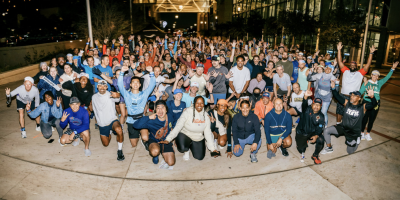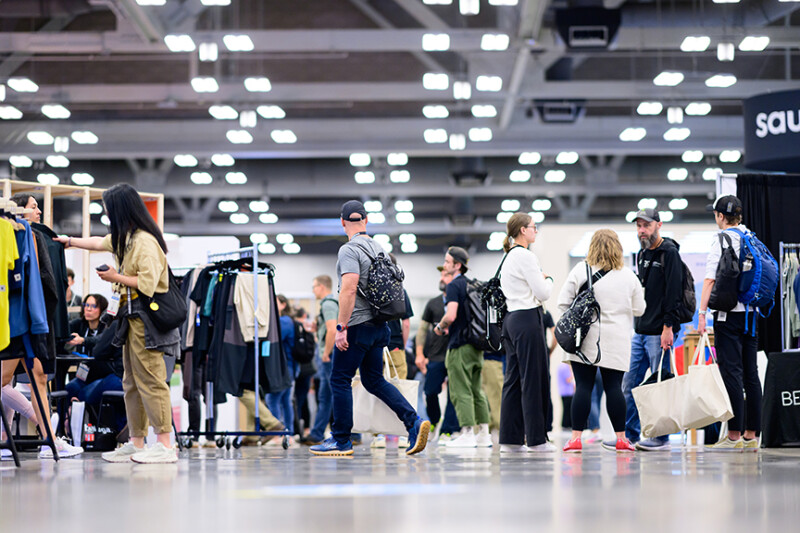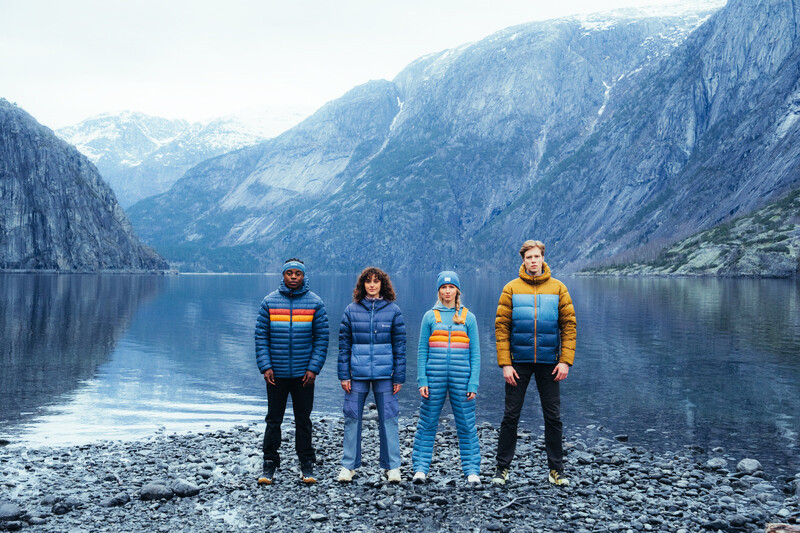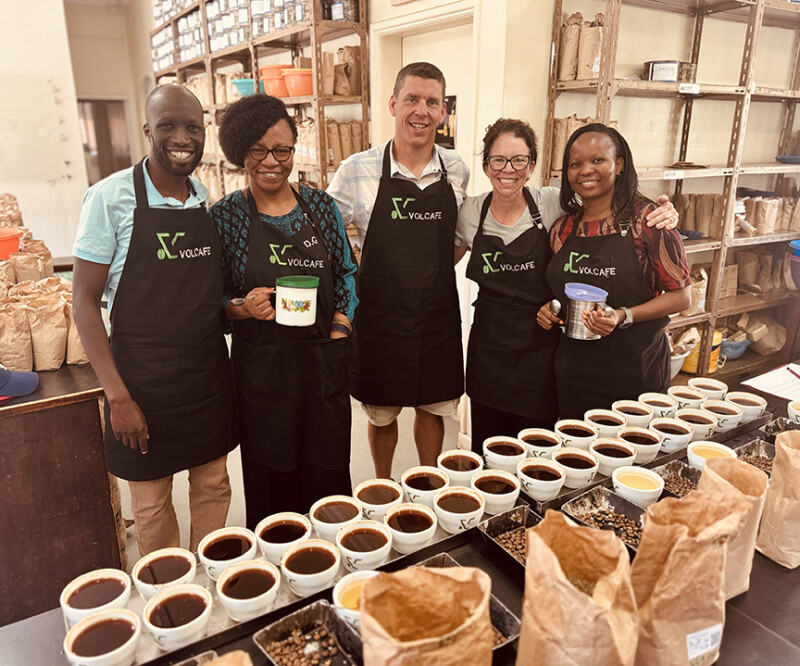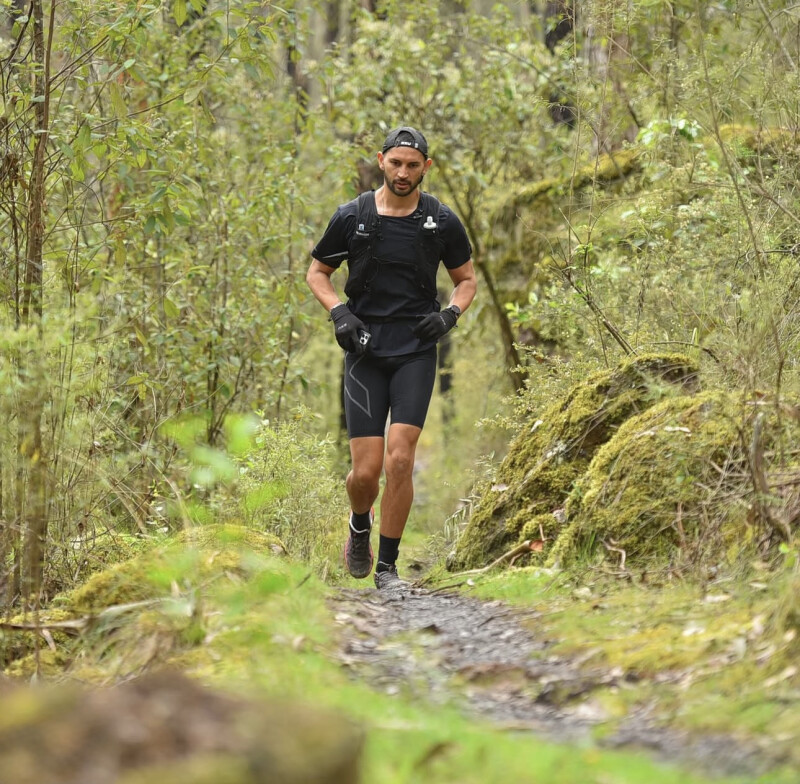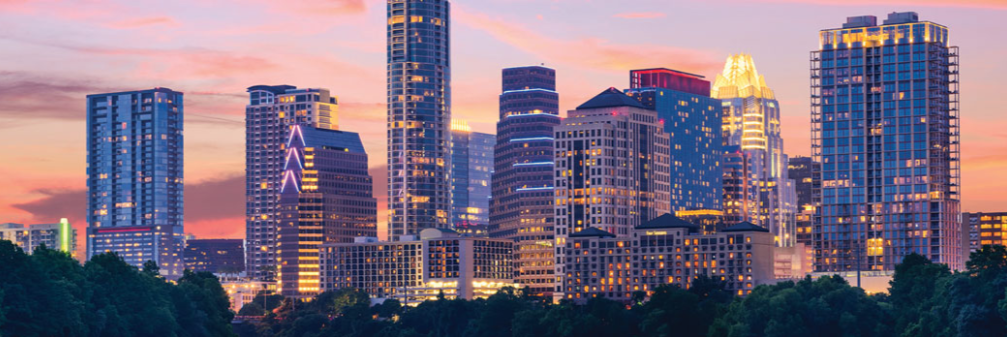The Running Industry Diversity Coalition (RIDC), a national nonprofit organization uniting the running industry to improve the inclusion, visibility and access for Black, Indigenous and People of Color (BIPOC) is celebrating its fifth anniversary in 2025. It has made some remarkable strides in its five year existence — but work remains to be done to produce more diversity and inclusion efforts in the run specialty industry. To tell the story of the founding of RIDC, its triumphs and challenges, and where it goes from here, Running Insight sat down with executive director Kiera Smalls. Here is her story.
Running Insight: Please take us back to the beginning, five years ago. What was the genesis of the concept of RIDC and who were the key people behind it?
Kiera Smalls: RIDC was born in 2020 when a group of run specialty retailers, brands, events and community leaders came together to create change in running after the murder of Ahmaud Arbery. There was a collective recognition that the running industry, while rooted in community, fell short in representing Black, Indigenous and People of Color (BIPOC) across the sport and the business behind it.
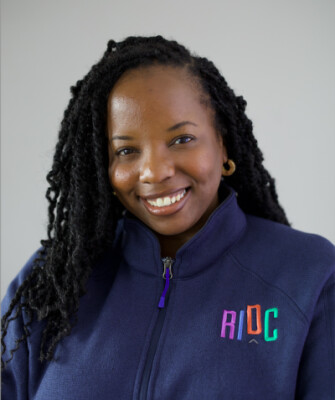
How did your involvement begin?
I got involved because I’ve always believed in the power of running to create a sense of belonging. I led my running community in Philadelphia for nearly a decade and I knew the industry didn’t need more statements, it needed more action. So when the RIDC was seeking its first executive director a year after its formation, I immediately jumped at the opportunity. The founding team had already created the initial strategy and hired me to implement it, build the infrastructure and ensure that this coalition wasn’t just a response to a moment, but the start of a deeper, ongoing movement.
Who else was there at the beginning?
After I joined, I brought on Betsy Rathwell, who leads our partnerships, and Abigail Hollie, who leads our programming, two key team members helping turn our vision into action.
What was your first meeting all about — where, who was there, what steps did you outline for the future?
The first closed meeting was virtual, like so much of 2020, and it was raw and honest. Some of the people in the room had been carrying the weight of racial justice advocacy for years. Others were just beginning to understand the depth of the conversation. It required openness, vulnerability and a willingness to sit with discomfort. Store owners, brand C-suite leaders and community advocates came together to hear from RIDC’s founding team about what was missing and what was urgently needed in our industry.
What was accomplished in that meeting?
They outlined the first steps: build a coalition, center BIPOC voices and hold the industry accountable through tangible goals and objectives. Our first public workshop, “A Talk About Race,” set the tone for what RIDC has stood for from the beginning — direct, open dialogue rooted in community truth-telling and collective action. The recording remains relevant and is available on RIDC’s website in the Resources Hub.
What were the first steps you had to take to get the run specialty business to pay attention to RIDC?
The first steps were open and honest conversations that were often uncomfortable, but necessary in laying the groundwork for change. We needed people to face hard truths, understand that this work is a shared responsibility and stay at the table. The founding team, which included some run specialty leaders, invited store, brand and event leaders to come together in support of RIDC’s formation.
From there, the group created workshops and working groups focused on recognizing systemic issues, measuring impact and making space for BIPOC voices to be heard, including on panels and at industry gatherings like The Running Event (TRE). Each small step helped build trust and made it clear that we weren’t here to tear the industry down. We were here to help it grow stronger.
Was there a seminal moment when you and your team realized this was an idea whose time had come and was important to the industry?
First, during our initial public workshop in 2020, “A Talk About Race,” dozens of people from across the running industry showed up ready to listen and learn. The turnout and vulnerability in that space, and after the call, made it clear that people were hungry for this work and willing to engage.
Second, a few early brands, such as Brooks and Hoka, made initial donations to support our mission and help with the formation of the RIDC. Their belief in the vision and in the leadership team at the time gave us momentum. It affirmed that these running brands weren’t just interested in a conversation. They were making a real commitment to change.
Third, attendance at RIDC activations at TRE has increased steadily since 2021. That consistent growth showed us that people were not only watching, but also engaging and ready to join us. They were returning, learning and bringing others with them.
Are you where you thought you would be five years after forming RIDC?
A five-year strategic plan guides our work and in several areas we’re ahead of where we expected to be. We’ve built strong relationships, launched transformational grants and mentorship programs and introduced educational offerings designed to fill critical gaps across the industry. As a result, RIDC’s reach now extends well beyond its early footprint, shaping how the sport and business of running approach inclusion, representation, accountability and growth.
We’ve also surpassed our expectations when it comes to community impact. The communities we serve have shown up for us in ways we couldn’t have imagined — growing with us, supporting our efforts, amplifying our message and staying engaged year after year. That level of trust and connection is something our board and staff do not take for granted. We’re committed to honoring it by continuing to create meaningful opportunities for people to lead, grow and be seen in this space.
Yet there is much more still to be done.
At the same time, we know there is still so much more to do. Shifting the culture of running is our north star. That kind of transformation requires time, consistency and collective effort. Progress is not only measured by numbers or reports, although we provide those as well, as evident in our Annual Impact Report. It is also measured by what you can see, feel and experience. We’re proud of the momentum, but we’re not satisfied. RIDC is here for the long haul, until long-term systemic change becomes the norm.
While there certainly is still progress to be made, many people feel that the run specialty business is actually ahead of many other industries when it comes to diversity and inclusion. Do you agree with that?
Some parts of the run specialty business are ahead, but overall the progress is uneven. There are brands and stores that are truly doing the work — listening to the RIDC and their communities and backing up their words with time, resources and real investment. Others still have a long way to go or haven’t yet recognized the relevance of their role in advancing this work. How we all choose to move forward, especially given the current pushback and political threats to diversity and inclusion efforts, will be the real test of our collective progress.
What core belief guides RIDC’s work?
Running should be ahead. It’s a sport that can and should be accessible to everyone.
That’s what we’re working toward. We’re proud of the momentum, but we’re not done. We’re eager to help even more people across the run specialty business – regardless of location or size – understand that this work is both a personal responsibility and a shared imperative for the health of their business.
Are there certain brands, retailers and/or sponsors you would like to give a shout out to for being an important part of RIDC in its first five years?
We’ve had partners show up in many ways over the years. Some were with us from the very beginning in 2020, while others joined as the work evolved. Whether it’s through funding our programs, offering their staff time, responding to our research surveys or helping us connect with more partners, each form of support has helped us move strategically from ideas to action. We especially value the partners who continue to show up with intention and are committed to growing alongside us over multiple years. That kind of steady commitment is what makes long-term change possible.
But the biggest shout-out goes to the communities we serve. They continue to trust RIDC as a go-to resource in the industry for opportunities, information and a safe place to share their concerns, whether in the sport or the business of running. Their trust, support and insight are the foundation of our impact. We’re able to do this work because they invite us in, speak up and stay engaged every step of the way.
Are there any specific accomplishments or benchmarks RIDC has reached that you are most proud of in its first five years?
I’m proud of how we turned conversations into action. Launching our baseline research on employment, the future of running and trail running participation has paid dividends for both our organization and the industry. It’s a data resource that continues to inform and inspire.
Tell us about your Run The Block program.
Run The Block, our grant and mentorship pilot program to grow BIPOC retail ownership in running, is one of our proudest milestones — thanks to Brooks, Playmakers, Strava and Charm City Run. Anyone could apply as long as they had 51 percent BIPOC ownership. That vision is becoming a reality with the opening of HARAKA, a new run specialty store in Prince George’s County, MD, set to open in Summer/Fall 2025. These are the kinds of tangible outcomes that show what’s possible when intention is backed by investment and how industry collaboration can spark pathways to generational wealth.
Any other specific accomplishments?
We’ve also hosted career summits, launched a jobs board, expanded our reach and helped shift how organizations approach community and employment engagement, with greater care, consistency and accountability. Through all of our efforts we’re creating real pathways into both the sport and the business of running. None of this work is easy, but these milestones are proof that it’s worth it.
The Running Event – the publisher of Running Insight – has always opened its doors to RIDC. How important has that been to you, and how do you see that continuing in the future?
TRE has been a critical partner in our organization’s growth and in helping us gain visibility and credibility within the run specialty industry. Having a seat at TRE means our conversations aren’t happening on the sidelines. They’re part of the main stage. That visibility matters. It signals that inclusion is not an afterthought. It’s part of how the industry moves forward.
It certainly has been a mutually beneficial partnership.
Yes, what’s made this partnership even more meaningful is the mutual growth. While we’ve benefitted from access and visibility, TRE and Diversified Communications (the owners of TRE and Running Insight) have also been learning from us about how to lead with intention, elevate underrepresented voices and expand access to all that TRE has to offer.
What happens next there?
We anticipate this trend continuing in even bigger ways: through more strategic collaboration with TRE and Diversified Communications leadership, expanded scholarships, thoughtful panels, a larger booth presence on the trade show floor and new activations that bring the RIDC mission to life. And just as important, more underrepresented voices will continue to shape the future of the run specialty industry — not as guests, but as leaders.
Speaking of TRE, whose idea was The Cookout? And what was the thinking behind it?
The Cookout originated from a shared desire among our staff and board to create a joyful, unapologetically BIPOC-centered space within TRE, where everyone can gather, celebrate our differences and network in ways that feel natural and affirming. The concept was sparked by our senior program manager, Abigail Hollie. It’s always fun to say, “We’re hosting The Cookout, and yes, it’s exactly what it sounds like.” People get it.
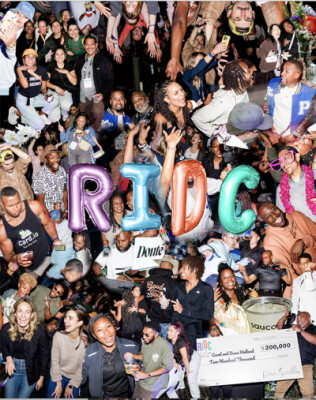
It is a fun evening.
It has become a can’t-miss event for TRE attendees and the local community, with attendance growing from 300 to 750 in just one year. And we’re bringing it to San Antonio this year to celebrate our fifth anniversary in style — with an all-day RIDC House experience nearby leading up to The Cookout centered on community, joy and culture.
Any other anniversary events planned?
We’ve been celebrating all year, from our “Giving Them Their Flowers” campaign to special launches with GU and Feetures, to our community event in Oakland with Renegade Running. September marks our official anniversary month and we’ll be celebrating across our platforms.
We’re inviting our community and partners to join in by sharing what RIDC’s work has meant to them, whether it’s a moment of connection, support, visibility, or collaboration. Posting your own reflections using #RIDCTurns5 is a meaningful way to celebrate with us and uplift our shared impact.
There are also a few special moments still to come that we’re not quite ready to announce. In the meantime, we encourage everyone to join the RIDC (it’s free!) and stay connected through our social media and monthly newsletter on the RIDC website.
Our fifth anniversary is a time to reflect and celebrate, but more importantly it’s a chance to invite more people in. We have more work to do and we hope more communities and partners will step forward to help us lead the way for what’s next.
To wrap up, what would you like to see RIDC accomplish in the next five years — and what is it going to take to achieve those goals?
Over the next five years, I want to see RIDC accelerate the growth of BIPOC ownership and leadership within the running industry, from the retail floor to the boardroom. I want our research and partnerships to not only inform, but also help shape industry standards and everyday practices. That kind of change takes more than good intentions. It requires continued commitment, aligned partners and the courage to invest in long-term work.
And other big plans?
I also see a future where RIDC works more closely with athletes. Their stories, influence and lived experiences are powerful. They should not be limited to ambassador roles. They deserve to be at the center of how the industry grows, as leaders, decision-makers and changemakers. We are laying the groundwork for that now.
We are not just keeping pace with where the running industry is headed. We are also helping shape the direction. And we are eager to invite others to help lead that change.
Following up on that thought, where would you like to see the run specialty business be in terms of diversity and inclusion five years from now?
Five years from now, I’d like to see a run specialty business where BIPOC runners, employees and owners are not the exception. Where representation, safe access and leadership are the expectation and not something we’re still trying to justify or build from scratch.
What will it take to achieve all of that?
Getting to that vision will require more than individual pledges and lip service. It will take real funding, shared accountability and a willingness from brands, events, retailers and individuals – both within the industry and across our communities – to keep listening, learning, evolving and showing up. Creating a running industry where everyone feels seen, valued and able to thrive should be a priority for all of us.
